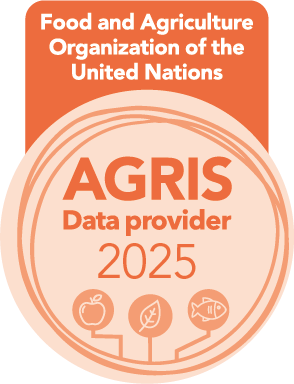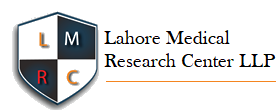Nutritional and Vitamin D Status of University Students in Khyber Pakhtunkhwa, Pakistan: A Cross-Sectional Study
Nutritional and Vitamin D Status in Students
DOI:
https://doi.org/10.54393/df.v5i04.159Keywords:
Vitamin D Deficiency, Dietary Habits, Inflammatory Markers, Nutritional StatusAbstract
Data on Vitamin D level and nutritional status of Pakistani university students are limited. Objective: To find dietary habits of the university students with special focus on vitamin D levels. Methods: This descriptive cross-sectional study included a total of 400 students (272/128 male/female) 18-26 years old students from Bacha Khan University Charsadda were included in this descriptive cross-sectional study. Socio-demographic, selected anthropometrics, dietary food intake, blood chemistry (lipid profile and CRP), and vitamin D status were measured. Results: Moderate energy deficiencies, particularly males (73% of RDA), and protein was meeting requirements in females but marginally short in males. Calcium (65% RDA), vitamin A (41% female, 30% male), and vitamin D (20% RDA) intake were significantly low. Iron intake was marginal in females (60%) but over met in males (135%). Low milk/dairy, egg, fish, and fruit/vegetable consumption reflected low micronutrient variety. Regular consumption of fast foods (3.4 times/week) and limited consumption of fish (0.5 servings/week) also indicated a shift toward nutrient-scarce dietary habits. Mean serum 25(OH) D level of 26.1± 12.6 ng/mL with A high number (32% ;95% CI: 13.5–27.3) of respondents were vitamin D deficient; 42% (95% CI: 35.3–52.8) were vitamin D insufficient; and only 26% (95% CI: 20.1 – 32.2) of the participants had normal vitamin D. In addition, high levels of inflammatory and lipid markers were observed. Conclusion: In summary, university students exhibited poor vitamin D status with high levels of CRP and blood lipid profile such that interventions are warranted.
References
Song Z. Personal Growth and Well-Being among University Students: A Comprehensive Analysis. Journal of Education in Black Sea Region. 2024 Jul; 9(2): 39-47. doi: 10.31578/jebs.v9i2.316. DOI: https://doi.org/10.31578/jebs.v9i2.316
Almoraie NM, Alothmani NM, Alomari WD, Al-Amoudi AH. Addressing nutritional issues and eating behaviours among university students: a narrative review. Nutrition Research Reviews. 2024 Feb: 1-45. doi: 10.1017/S0954422424000088. DOI: https://doi.org/10.1017/S0954422424000088
Griban G, Smiianov V, Lyakhova N, Tkachenko P, Harlinska A, Dovgan N et al. The impact of nutritional quality on the students' health. Acta Balneologica. 2021; 1 (163): 43-54. doi: 10.36740/ABal202101107. DOI: https://doi.org/10.36740/ABal202101107
Shahzad B, Shahzad M, Khan MJ, Khan S, Bibi H. Plasma vitamin D status and associated factors among pregnant women of Peshawar, Khyber Pakhtunkhwa, Pakistan: A pilot study. Khyber Medical University Journal. 2019 Dec; 11(4): 226–230.
Mufti MA, Malhi UR, Zubair A, Badar I, Mufti M. Vitamin D levels in adults in northern Pakistan. Rawal Medical Journal. 2012; 37(1): 2–5.
Khan AH, Naureen G, Iqbal R, Dar FJ. Assessing the effect of dietary calcium intake and 25 OHD status on bone turnover in women in Pakistan. Archives of Osteoporosis. 2013 Dec; 8(1): 151. doi: 10.1007/s11657-013-0151-2. DOI: https://doi.org/10.1007/s11657-013-0151-2
Jafri L, Majid H, Ahmed S, Naureen G, Khan AH. Calcaneal ultrasound and its relation to dietary and lifestyle factors, anthropometry, and vitamin D deficiency in young medical students. Frontiers in Endocrinology. 2021 Jan; 11: 601562. doi: 10.3389/fendo.2020.601562. DOI: https://doi.org/10.3389/fendo.2020.601562
Nasrullah MH, Haider MJ, Arif M, Zahid MN, Iftikhar S, Mahmood S et al. Eating disorders and disordered eating behaviors among undergraduate students in Pakistan as measured by eating disorder examination questionnaire (EDE-Q). Cureus. 2024 Apr; 16(4). doi: 10.7759/cureus.59158. DOI: https://doi.org/10.7759/cureus.59158
Carballo-Fazanes A, Rico-Díaz J, Barcala-Furelos R, Rey E, Rodríguez-Fernández JE, Varela-Casal C et al. Physical activity habits and determinants, sedentary behaviour and lifestyle in university students. International Journal of Environmental Research and Public Health. 2020 May; 17(9): 3272. doi: 10.3390/ijerph17093272. DOI: https://doi.org/10.3390/ijerph17093272
Saeed BQ, Jairoun AA, Ashraf Khamis A, Hatim Abdelrahim L, Abobakr Aljomhi A, Adrees AO et al. Vitamin D deficiency and insufficiency among university students: prevalence, risk factors, and the association between vitamin D deficiency and episodes of respiratory tract infections. Risk Management and Healthcare Policy. 2021 Jan; 14: 2733–2741. doi: 10.2147/RMHP.S308754. DOI: https://doi.org/10.2147/RMHP.S308754
Steckel RH. Anthropometrics. InHandbook of cliometrics 2024 May: 1787-1805. Cham: Springer International Publishing. doi: 10.1007/978-3-031-35583-7_61. DOI: https://doi.org/10.1007/978-3-031-35583-7_61
Al Anouti F, Thomas J, Abdel-Wareth L, Rajah J, Grant WB, Haq A. Vitamin D deficiency and sun avoidance among university students at Abu Dhabi, United Arab Emirates. Dermato-endocrinology. 2011 Oct; 3(4): 235-9. doi: 10.4161/derm.3.4.16881. DOI: https://doi.org/10.4161/derm.3.4.16881
Alaasswad NM, Jebril AI, Ahmed HA, Almahdi RS, Alssageer MA. Vitamin D deficiency and anemia among pharmacy students. Mediterranean Journal of Pharmacy and Pharmaceutical Sciences. 2024 Jul; 2(2): 88-94.
Lhamo Y, Chugh PK, Gautam SR, Tripathi CD. Epidemic of Vitamin D deficiency and its management: awareness among indian medical undergraduates. Journal of Environmental and Public Health. 2017 Apr; 2017(1): 2517207. doi: 10.1155/2017/2517207. DOI: https://doi.org/10.1155/2017/2517207
Dong H, Asmolovaite V, Marseal N, Mearbon M. Vitamin D status and dietary intake in young university students in the UK. Nutrition & Food Science. 2022 Apr; 52(4): 616-26. doi: 10.1108/NFS-07-2021-0201. DOI: https://doi.org/10.1108/NFS-07-2021-0201
Zarei M. Food insecurity and vitamin D deficiency factors, and the effects of vitamin D supplementation on metabolic syndrome among food insecure and vitamin D deficient Iranian elderly [Doctoral dissertation]. Malaysia: Universiti Putra Malaysia; 2025. doi:10.53555/knw3yw30. DOI: https://doi.org/10.53555/knw3yw30
López-Moreno M, Garcés-Rimón M, Miguel-Castro M, Fernández-Martínez E, Iglesias López MT. Effect of nutrition education on health science university students to improve cardiometabolic profile and inflammatory status. Nutrients. 2023 Nov; 15(21): 4685. doi: 10.3390/nu15214685. DOI: https://doi.org/10.3390/nu15214685
Mhaimeed O, Burney ZA, Schott SL, Kohli P, Marvel FA, Martin SS. The importance of LDL-C lowering in atherosclerotic cardiovascular disease prevention: Lower for longer is better. American Journal of Preventive Cardiology. 2024 Mar: 100649. doi: 10.1016/j.ajpc.2024.100649. DOI: https://doi.org/10.1016/j.ajpc.2024.100649
Khan A, Noor B, Khan H, Nawaz AB, Mustafa A, Ahmad W et al. Knowledge of nutritional supplements among university students of Peshawar, Khyber Pakhtunkhwa, Pakistan. Journal of Medical Sciences (Peshawar). 2023 May; 31(1): 1–6.
Haq F, Khan R, Mustehsan ZH. Assessment of knowledge, attitude and practices regarding vitamin D among students of Saidu Medical College, Swat. Pakistan Journal of Public Health. 2017 Jun; 7(1): 17–20. doi: 10.32413/pjph.v7i1.17. DOI: https://doi.org/10.32413/pjph.v7i1.17
Zeb F. Eating attitudes related to the nutritional status of university girls in Peshawar, Khyber Pakhtunkhwa, Pakistan. Journal of Clinical Nutrition and Dietetics. 2017; 3(1): 1–5.
Khan A, Noor B, Khan H, Nawaz AB, Mustafa A, Ahmad W, et al. Assessment of nutritional status, diet, and physical activity regimens among undergraduate medical students in Peshawar. New Journal of Medical Sciences. 2023; 2(2): 1–6. doi: 10.69723/njms.02.02.0316. DOI: https://doi.org/10.69723/njms.02.02.0316
Hussain M, Khan S, Ahmed S, Ali M. Establishing reference ranges for vitamin D levels in a population-based study in Peshawar, Pakistan. medRxiv [Preprint]. 2024. doi:10.1101/2024.02.15.24302821. DOI: https://doi.org/10.1101/2024.02.15.24302821
Downloads
Published
How to Cite
Issue
Section
License
Copyright (c) 2024 DIET FACTOR (Journal of Nutritional and Food Sciences)

This work is licensed under a Creative Commons Attribution 4.0 International License.
This is an open-access journal and all the published articles / items are distributed under the terms of the Creative Commons Attribution License, which permits unrestricted use, distribution, and reproduction in any medium, provided the original author and source are credited. For comments












